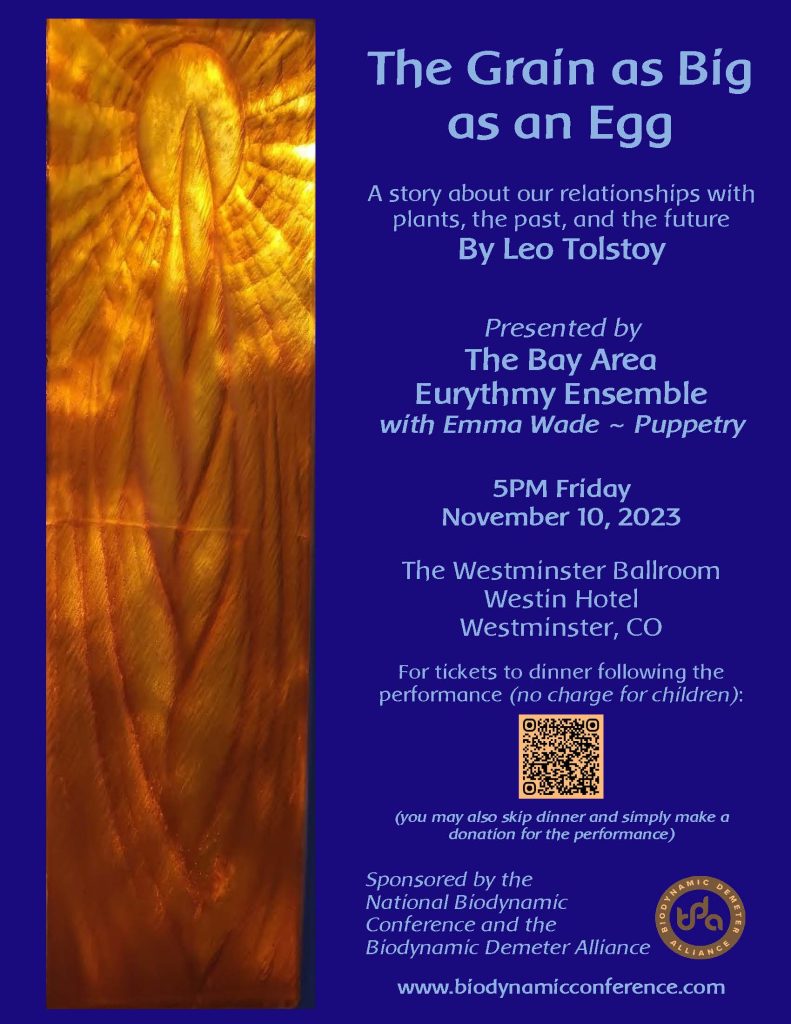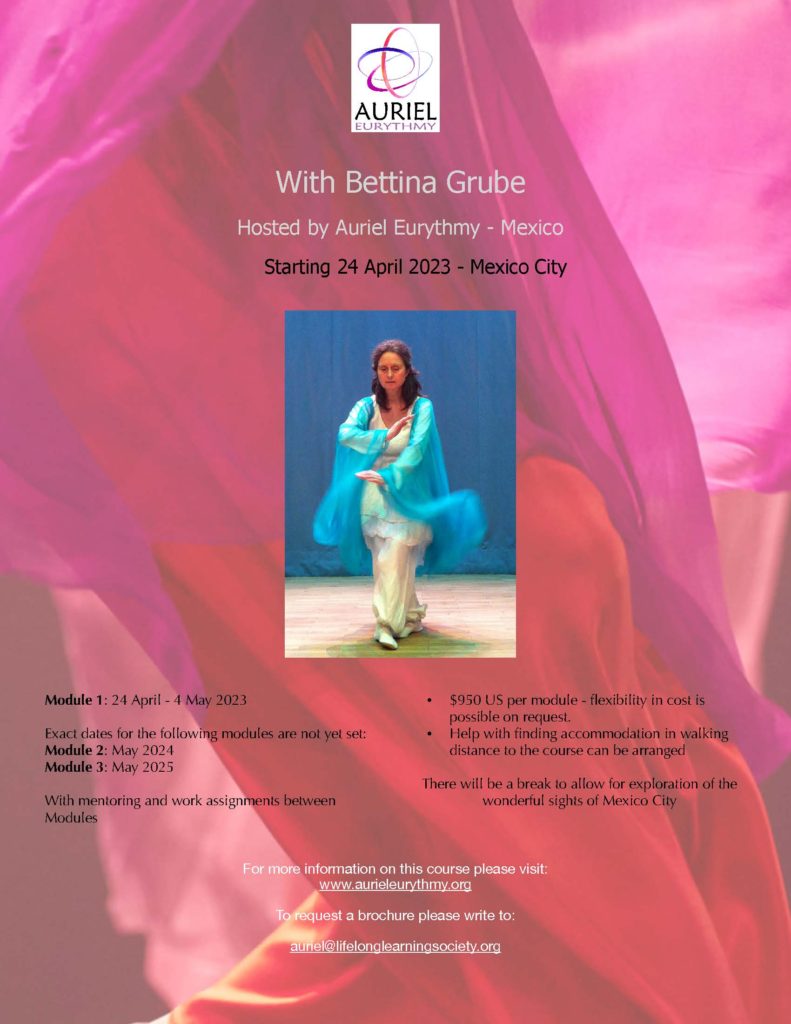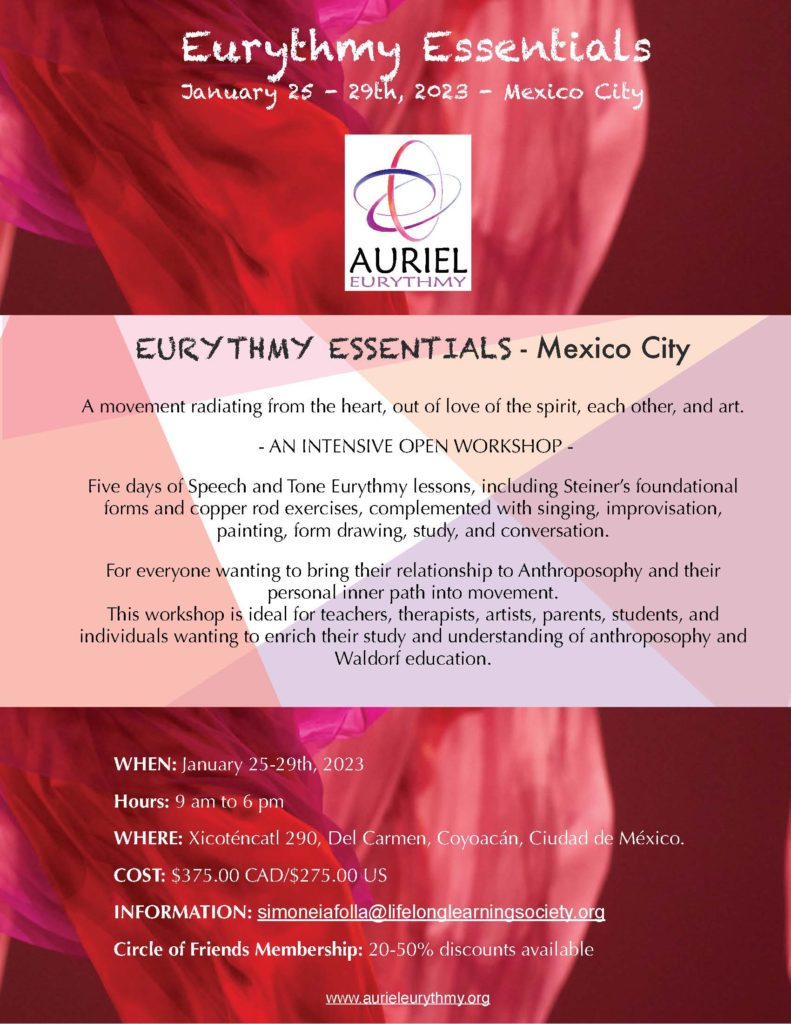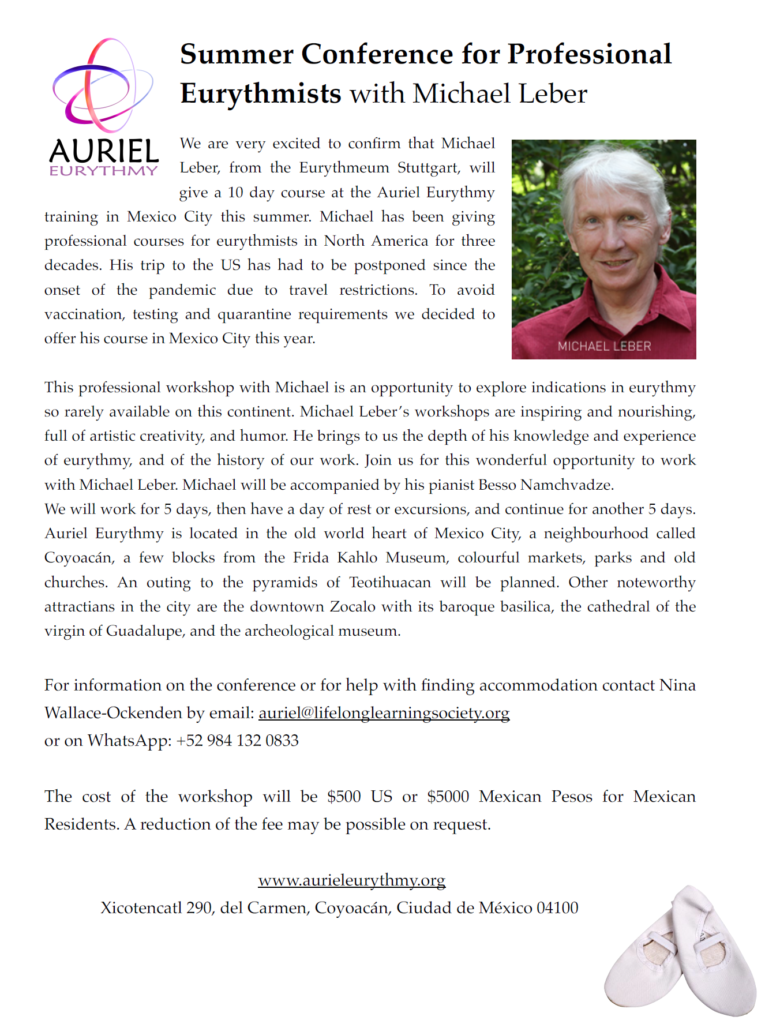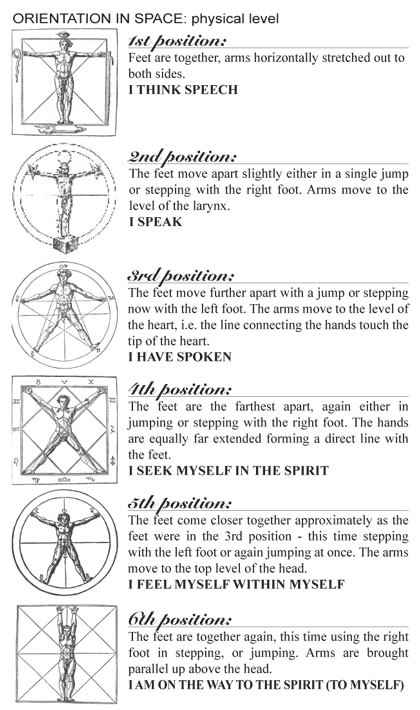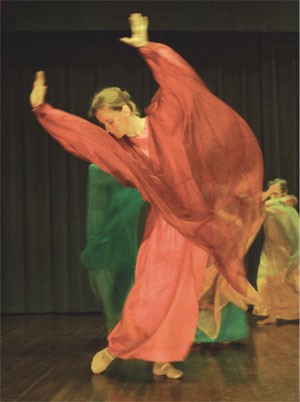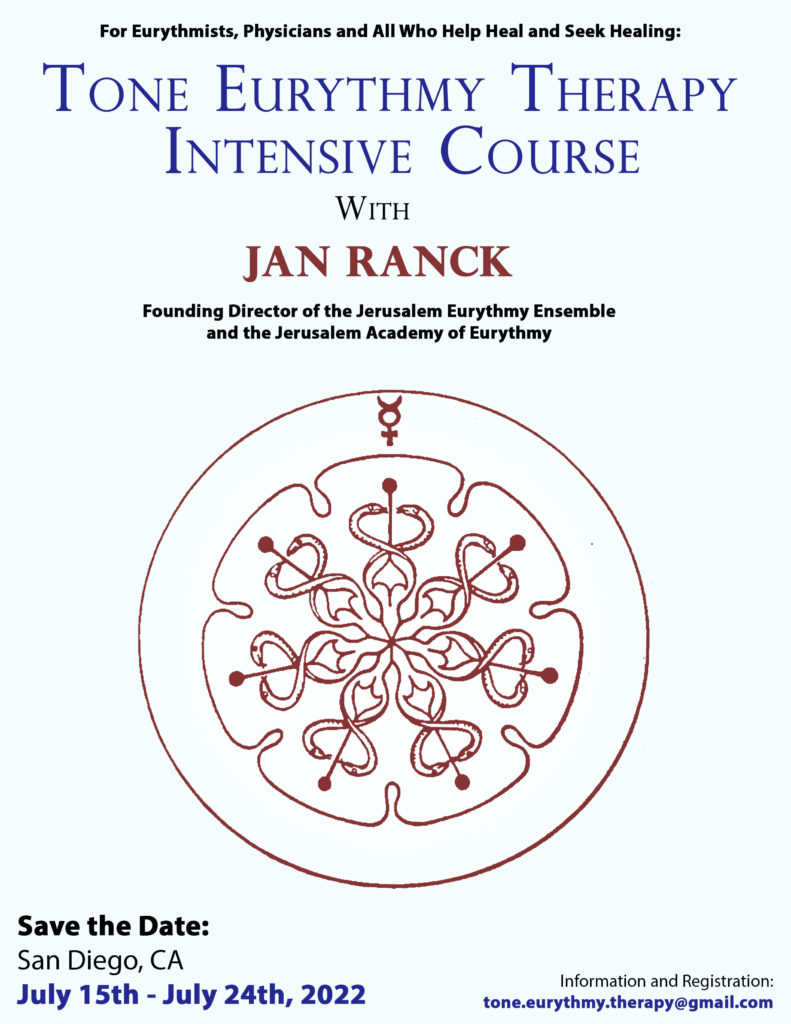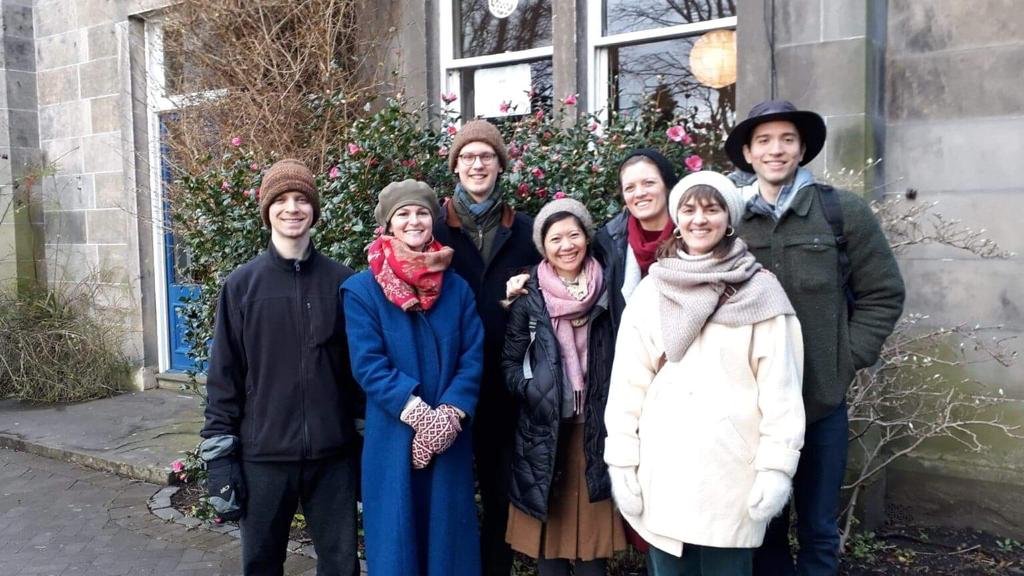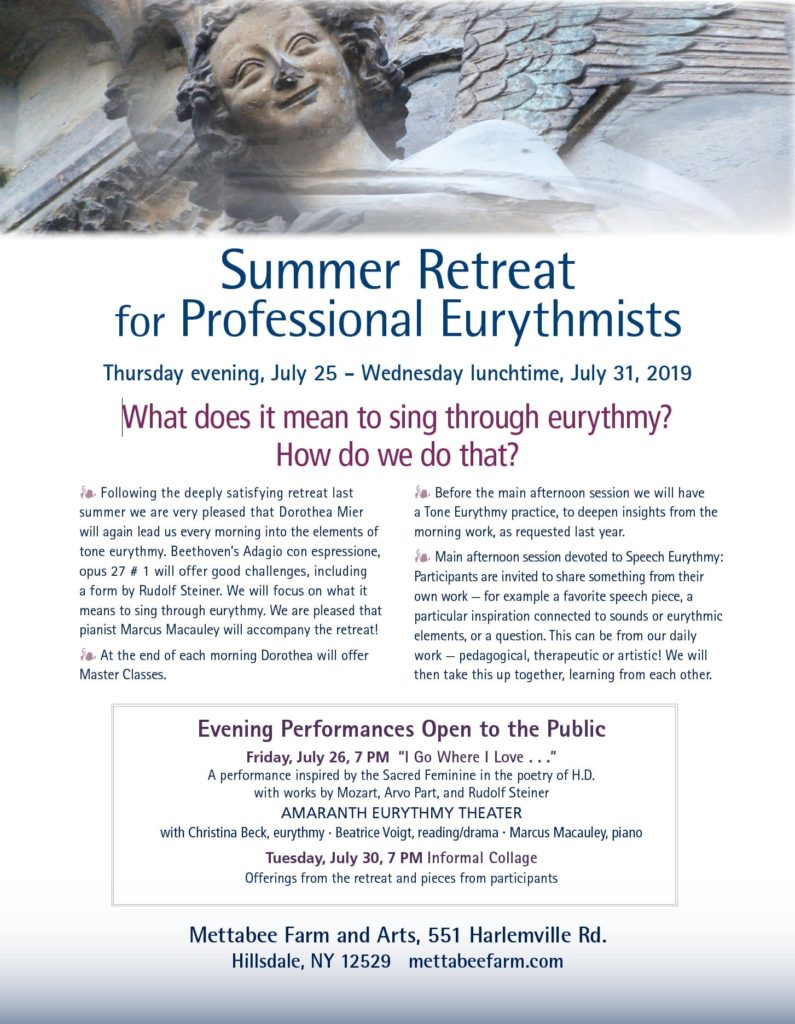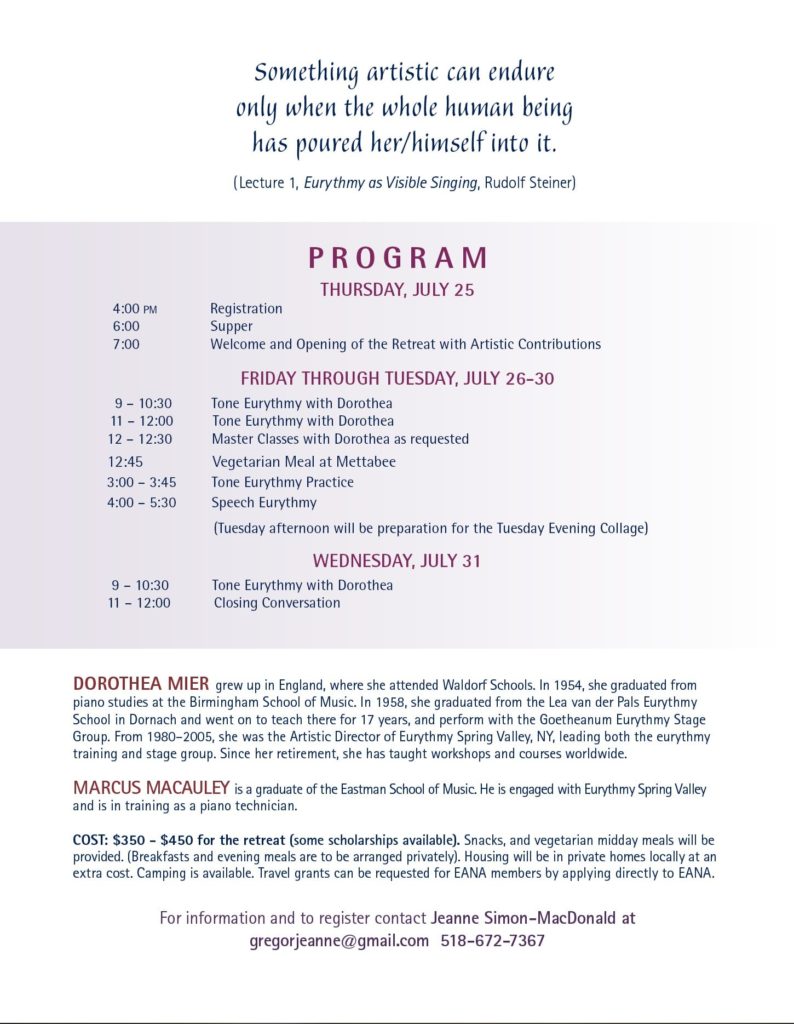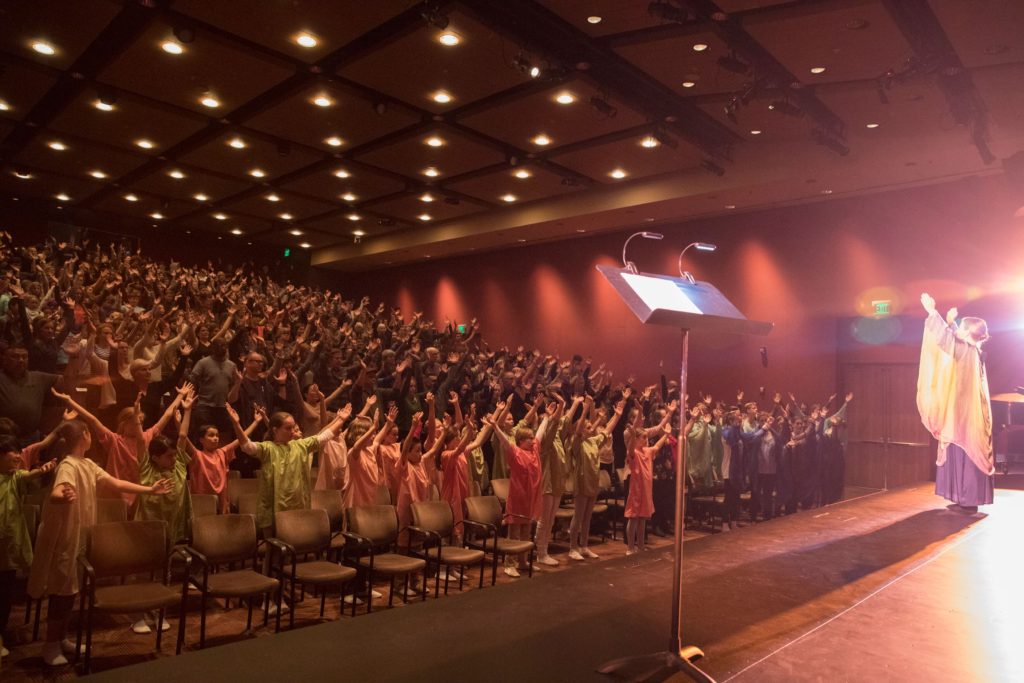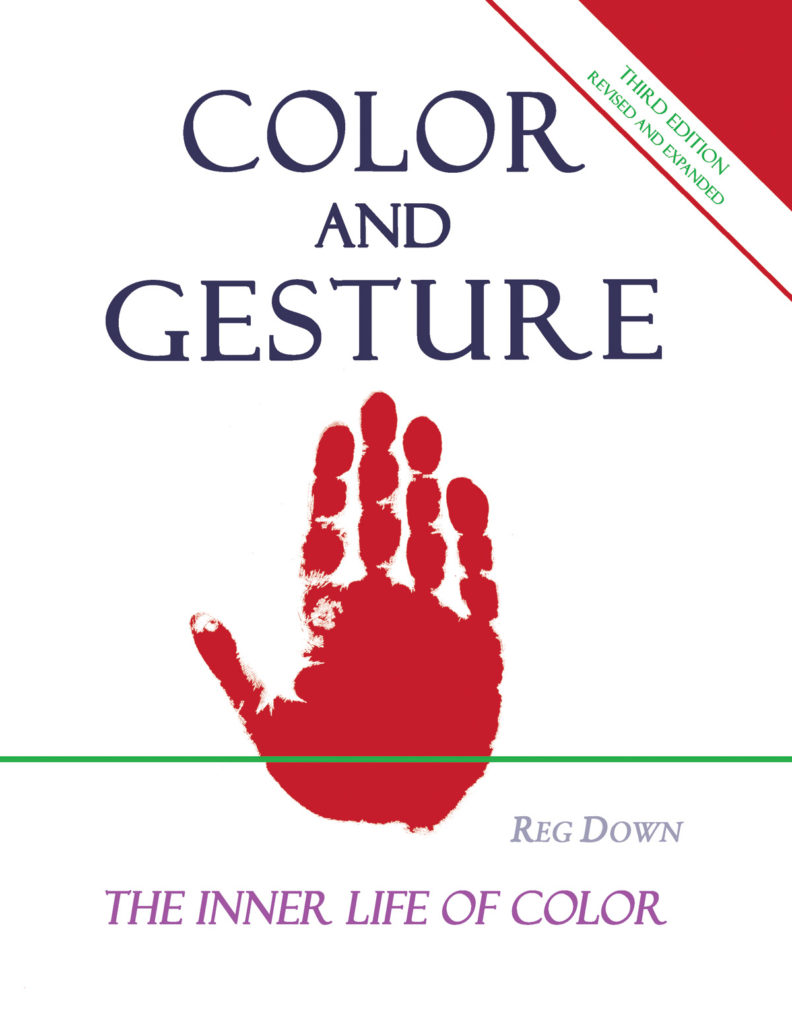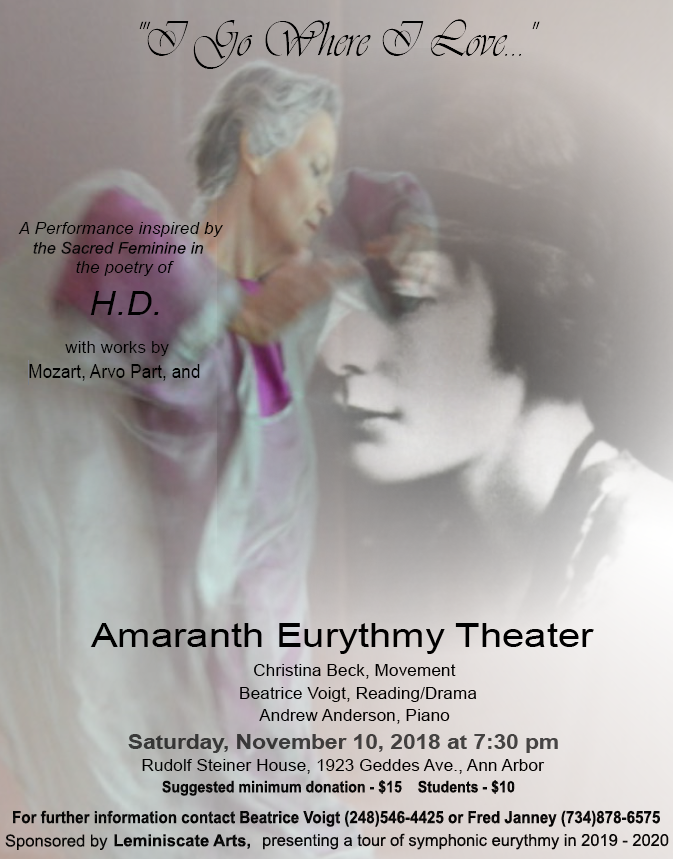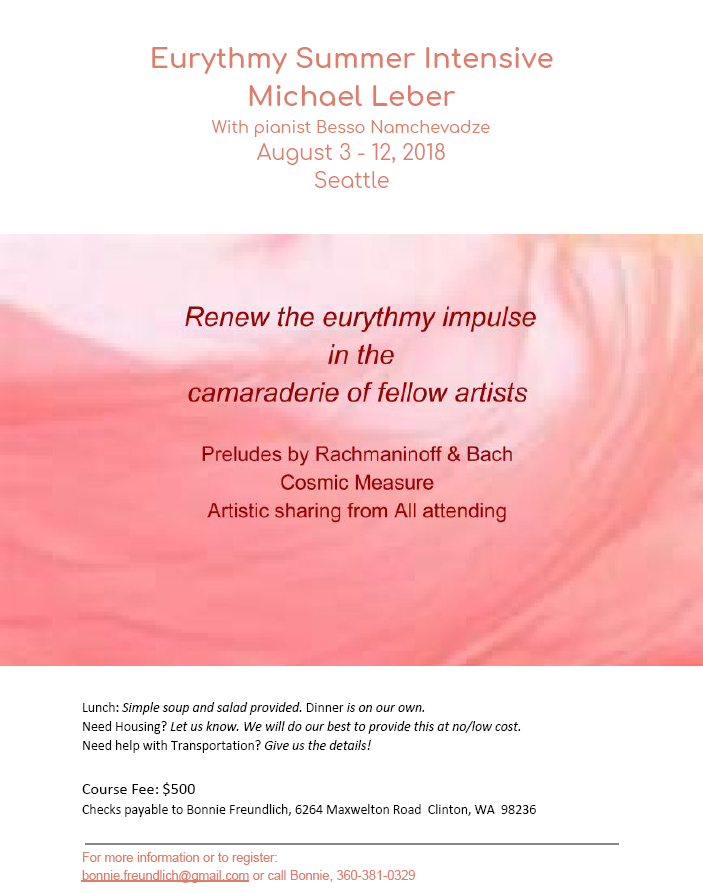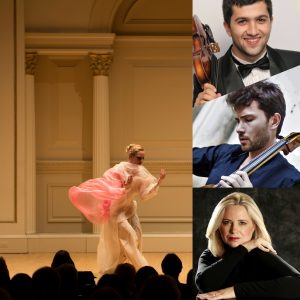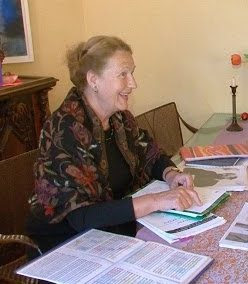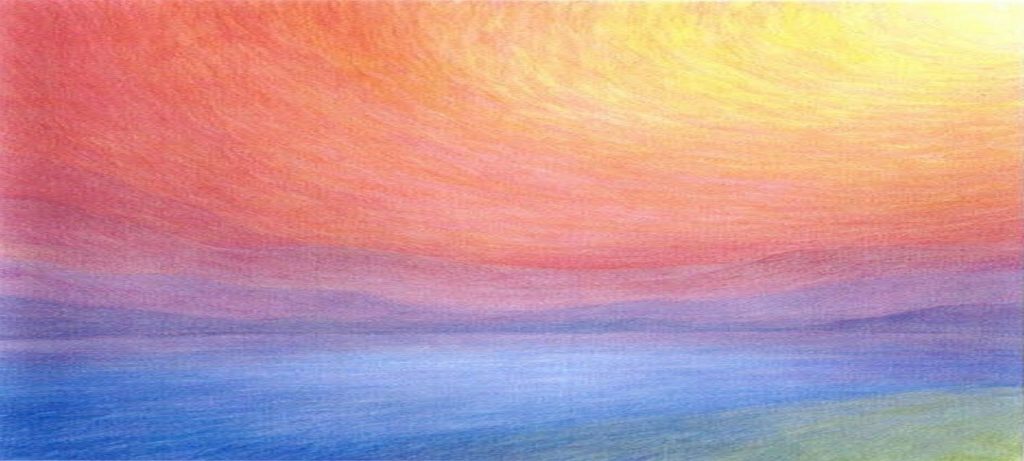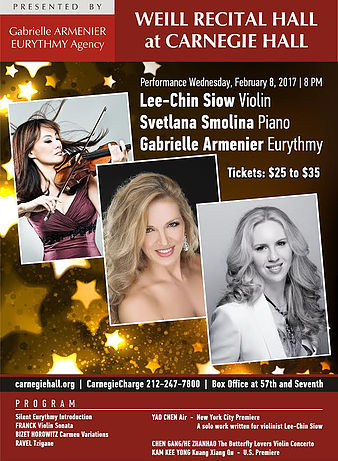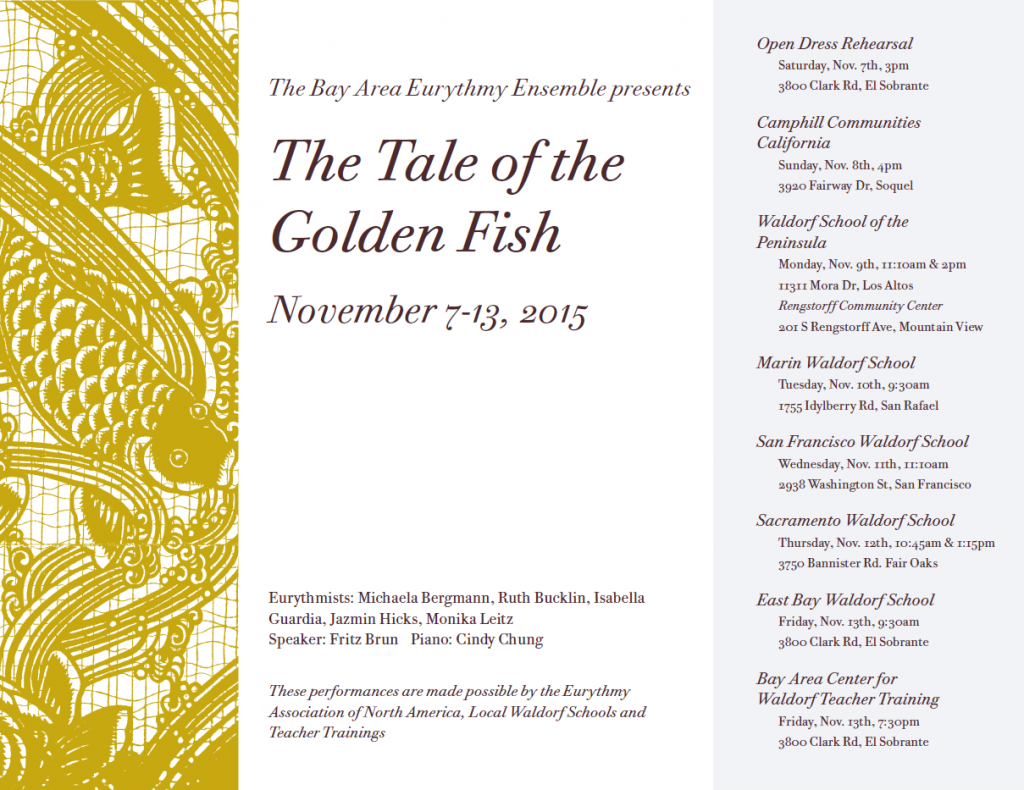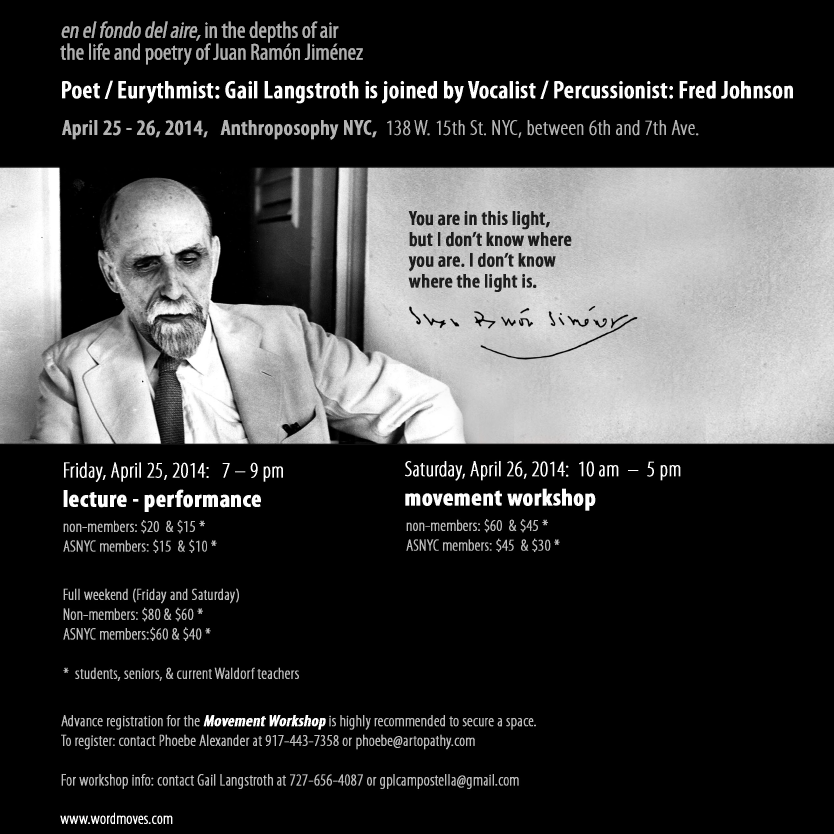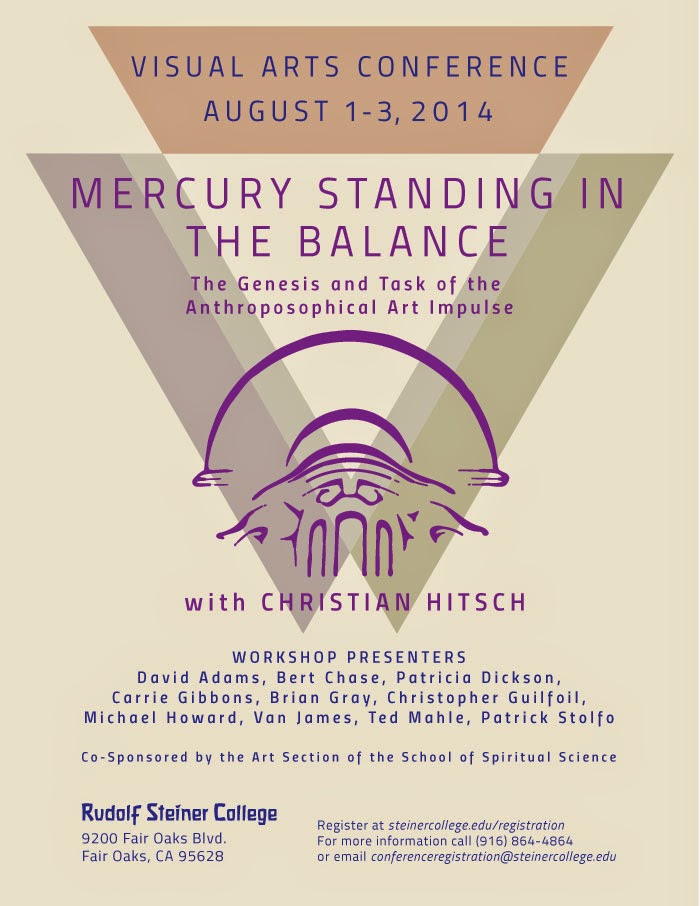When I did eurythmy for the first time, I felt that my soul could breathe. Then I noticed that I saw the world differently, for example, when walking down the street I would notice what looked like a sculpture, but on coming near, it would be a dead tree! I began to see the formative qualities in life around me. Now I wonder if this is how our Waldorf alumni perceive the world.
Eurythmy is a movement art and the name eurythmy comes from the Greek words ‘eu’ meaning harmonious and rhythm. The human form is the instrument and through eurythmy gesture and movement, one may achieve balance.
Moving together in eurythmy helps the students overcome many hindrances, establishing a sense of spatial relations and an inner sense of directionality. Movement is an activity of the will, and while moving together we round off our rough edges; one result is that social harmony is created among classmates. It is said that a school who sings together, breathes together. And it has been observed that eurythmy helps create social harmony on many levels within a school. Great transformations occur through the practice of anthroposophical arts.
For some time I have been interested in how children learn. After observing many children in Waldorf schools, it is apparent that the curriculum is inspired and truly meets the child at each stage of development. When hindrances to learning arise, the teachers meet to determine what special remediation or therapy is best appropriate. The therapeutic eurythmist works one on one with each student, who is asked to practice at home with parental help.
Constitutional Types of Children are helpful guidelines for the teachers.
A most helpful guide for child observations can be found in the material that Rudolf Steiner gave to the first teachers. The threefold human being (Anthropos) has a physical, soul, and spiritual nature. The forces of thinking, feeling, and will are aspects of the soul. As we live in a three-dimensional world, we can experience polarities that pull us into opposing directions. For example, gravity and levity can be expressed in an exercise, “Light stream upward; weight bears us downward,” an exercise given to his students even before eurythmy was created by Dr. Steiner in 1912. One can imagine stretching upward with the arms, while the feet are apart, keeping one grounded. Our likes and dislikes can be described as sympathies and antipathies, definitely a soul experience; this comes in eurythmy as contraction and expansion: “Joy and woe are woven fine, a clothing for the soul divine” (William Blake). Whoever has moved with a group, contracting in oneself, then all moving forward so that the circle of people contract, finding the moment when the movement shifts so that the gesture opens and then the circle of people expand, this is truly a breathing movement, a breathing of the soul. Isn’t that the first difference that people notice when seeing eurythmy performed for the first time, the developed back space of the eurythmists? Usually we do not confuse up and down or back and front, but right and left is so symmetrical, until a dominate side is strengthened. When asked, most people put their hands on their hearts when asked to find a center of their being. Although the heart lies in the center of the chest, it is tilted, so that we think of our heart-side as being on the left. (I have not been able to confirm the degree of the angle, but it is thought to reflect the tilt of the earth on its axis.) This heart-side is the feeling side, the more receptive side. The teachers of the early childhood classes move their circle games in the direction of the sun, clockwise for us in the Northern Hemisphere. Of course, exercises are given to help the children strengthen their dominate side, right or left. Thus we experience the three-dimensions through the width of space (right and left), through the fore and back space (as soul breathing of self with the world) and in the forces of gravity and levity (the heights and depths).
Teachers hone their observations of children, which informs us how they learn. When the child is in balance, learning comes naturally. When one pole or the other predominates, ways need to be found to rebalance. The ancient Greeks spoke of a virtue as having two opposing vices: courage is the virtue that holds the balance between fearfulness and fearlessness, while both extremes prove to be dangerous. Rudolf Steiner, in his observations of the human being, spoke of the constitutional types of children. He described gave seven different constitutional types, with the soul in-breathing and out-breathing between the polarities. One knows the feeling of being stuck, too fixed, and the opposite of being too loose, lacking form. Yet we seem to be able to swing between these polarities, as we try to maintain a fluid balance in life. When would therapy be recommended?
The active child will be in the midst of the play, but may have difficulty coming to quiet. The quiet child stands and observes without entering into the play. The teachers provide an altering rhythm between active play and restful activities throughout the school day. Both play and rest are important and every parent knows the struggle of transitions from one activity to another. Surprisingly, Dr. Steiner suggests that the active child would benefit from more fruit in the diet, to help the child take control of limb activity. And for the quiet, sedentary child…root vegies to help the digestion learn to assimilate salt. The doctor teaching in the Therapeutic Eurythmy Training in North America recommends eating the four parts of the plant (roots, stems, leaves, fruits, including grains and seeds) daily for a balanced diet.
Recently I worked with several kindergarten children, who had challenges (with much name calling and tender feelings) in the social realm with other classmates. After an initial evaluation, it became clear that these children were very sensitive, what could be called thin-skinned constitution. Our skin is the largest breathing organ we have and our soul breathes with the world. The eurythmy gestures create a protective sheath for the young child; however a few of them needed extra support. After therapeutic eurythmy, these children are socializing in first grade, happily forgetful of past insults or injuries. The other polarity would be a thick-skinned constitution; this is a child who will show boundary issues, as well, but in a more awkward manner, bumping into people and things. Therapeutic eurythmy helps these children become more aware of and sensitive to others in movement.
Imitation is how the child assimilates the world.
The young child learns through imitation, by doing what is seen, and through the activity, knows it. Imitation is not just a copy or simulation. We know that the young child is at one with the world, living in the soul state of wonder, as long as they are protected from too much sensory overload. The gesture for wonder is open, the eurythmy sound, Ah. A good example of this state of oneness can be observed while watching a parrot. When I move my finger, the parrot moves his head following my finger. The parrot does not seem free to not move his head, for how long I don’t know as I give up long before he is tired of this game. What is a better word than imitation, oneness? This is such a powerful force that allows one to learn to speak one’s mother tongue or even a second language before one can write it, to take in the world actively and to make it one’s own, to know the environment in every sense.
When a young child has difficulty imitating the gestures in eurythmy, a specific therapeutic eurythmy exercise has helped many children (in nursery/kindergarten through second grade). If we speak the Latin vowels, it is a progression from the back of the mouth with Ah and moving forward past the lips with U. Also it is a soul progression. As the young child lives in wonder (Ah), any sense of self-awareness gives another mood. As the open gesture of arms wide in Ah, the arms now cross and touch; any touching is an experience of self. To point or indicate with one arm extended, that is assertion of the self. The sounds of the Latin vowels are A, E, I. For the child who is unable to imitate, lead from one sound to the other and then move back in reverse. One may swing the arms from open, crossed to one stretched arm; switch to the other arm, cross arms and end with the open gesture. Then ask the child to jump these positions, three jumps forward and then three jumps back. I speak, “Ha, Hey, Hee; Hee, Hey, Ha.” It is important that they hear the sounds with the gestures. And as they gain agility, they may jump faster! Often the tricky part is crossing the legs moving back. After working with one there-year-old child, the nursery teacher remarked how his behavior changed, that he was able to imitate. And then I realized that this exercise leads the child back to wonder, Ah! As this hygienic exercise was given to teachers and not directly in the therapeutic eurythmy course for doctors and eurythmists, it is an exercise to be used by teachers.
Specific therapeutic eurythmy exercises are beneficial for all imbalances in the constitutional types of children. However the eurythmy teacher may offer hygienic eurythmy exercises for a class or a group of students presenting a similar condition, such as puberty. When the middle school students arrive for class in state of high excitement, the eurythmist senses that this is the time to introduce an exercise for puberty. As the legs kick high, with the energy of wild horses, the arms slowly create a balancing gesture to bring calmness to the turmoil erupting below. The image I give them is the Charioteer of Delphi, whose statue is exhibited in the Delphi Archaeological Museum, Greece. The large-eyed, far-seeing Charioteer stands upright, but one has to imagine the two-wheeled chariot with the racing horses. The intention is to bring calmness and a sense of order to the tumultuous forces arising. Many students have enjoyed this exercise, especially because it meets them right where they are in the moment.
Eurythmy as an art, as therapy, as meditation for the individual
It is important to recognize the role of arts in our lives. The arts were central to the Anthroposophical Movement from its earliest days. Eurythmy and speech formation came into existence through the collaborative efforts of Rudolf Steiner and his wife, Marie Steiner-von Sivers. It was a most creative time for those who were present at that time. In our age, unless one consciously pursues an art (visual or movement art, crafts, music, drama, etc.) it can seem a luxury, not necessary for life. Yet, developing artistic sensibilities is part of becoming truly human. Without artistic endeavors in their lives, many people today seek art as therapy. Waldorf Education is education as an art, on all levels, personal, social, and in the work itself. One only needs enter a public school to see how stressed the children are with too early abstract learning and testing; and how their breathing deepens and calms when they are given handwork. We come into the world to create, to build, to make an imprint and to bring about change. We are creative beings.
Eurythmy is visible speech and visible music, so the laws of language and music apply. What makes it therapeutic is to engage one’s imagination in the activity of forming consonants, picturing oneself in the activity, as consonants give us form. The vowels are soul expressions and when we speak vowel sounds, we intone healing vibrations; then listen, as this is the realm of inspiration. The therapist may give a sequence of eurythmy sounds to practice, and this arises from intuition.
I know many people who practice eurythmy daily. Eurythmy invigorates one’s etheric (life) forces. There are many verses and exercises from which to choose. Some may help us relax or helps us focus and feel more centered, but all strengthen the ability of the self to take hold and grasp this instrument of the human form. For example, “Light stream upward; weight bears us downward,” calms the autonomic nervous system. Instructions may be found at www.rsarchive.org under Lectures (Lecture given on the January 12, 1924, in Dornach, Collected Work GA0233a).
Another example is to practice the evolutionary sequence of consonants on the zodiac. It is an excellent remedy to jet-lag, if used as a preventative several weeks before take-off! Please ask a eurythmist.
Eurythmy Meditation
I seek within me
Creative forces working
Living powers creating.
It tells me
the earth’s weighty power
through my feet Word,
It tells me
the airy forming power
through my singing hands,
It tells me
the heaven’s light power
through my sensing head,
How within the human being
The Cosmos is speaking, is singing, is sensing.
Rudolf Steiner
There are therapeutic eurythmy exercises for all illnesses.
It is my experience that eurythmy is much more powerful than we have begun to realize. Eurythmy has its origin in the Cosmic Word, the language that gives us form. For individuals interested in therapeutic eurythmy, it takes a commitment to practice the exercises daily. It is a process that engages the entire person. I have been witness to those people who are set free from fear and worry, once they take their healing into their own hands. It becomes a blessing!
Maria Ver Eecke
Chestnut Ridge, NY
For more information: www.therapeuticeurythmy.org
Maria began teaching in 1975 at an English-medium preparatory school, Maseru, Lesotho, Africa. In 1980, she graduated with ‘D’ course from the School of Eurythmy, Spring Valley, NY, and began teaching eurythmy at the Green Meadow Waldorf School. In 2011 Maria graduated from the Therapeutic Eurythmy Training in North America and received her diploma from the Medical Section of the Goetheanum. Presently she practices eurythmy therapy at the School of Eurythmy, Spring Valley. She continues to perform eurythmy in the New York area. For seven years she participated in the Mystery Drama Productions, Spring Valley, New York.
PDF Version of Article

